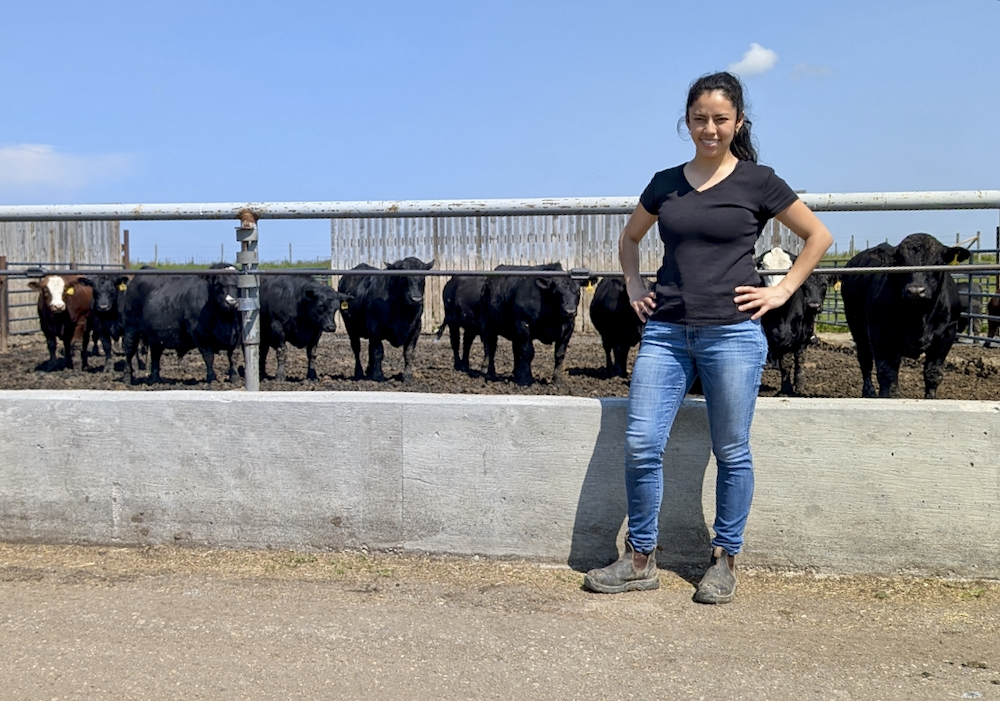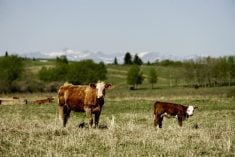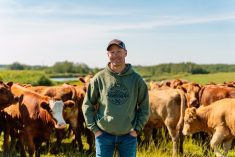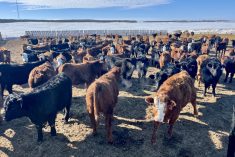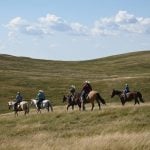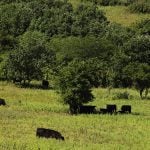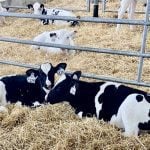The latest stretch of drought spurred graduate student Beatriz Montenegro Gonzalez to examine the potential of wheat straw as cattle feed in tough economic times.
It was a chilly June day when Gonzalez, along with several other researchers, presented at the Livestock and Forage Centre of Excellence field day near Clavet, Sask. As people filed off the large charter buses, they pulled their hoods tight against the cold. Feed trucks came and went, and the wind snapped through the canopy above the researchers.
Gonzalez, a graduate student at the University of Saskatchewan, began explaining her master’s project. She’s looking at maximizing the use of wheat straw in beef cattle diets, using other byproducts such as canola screenings and flax screenings, to see if they can be an economically viable option for producers to use in years when money is tight.
Read Also
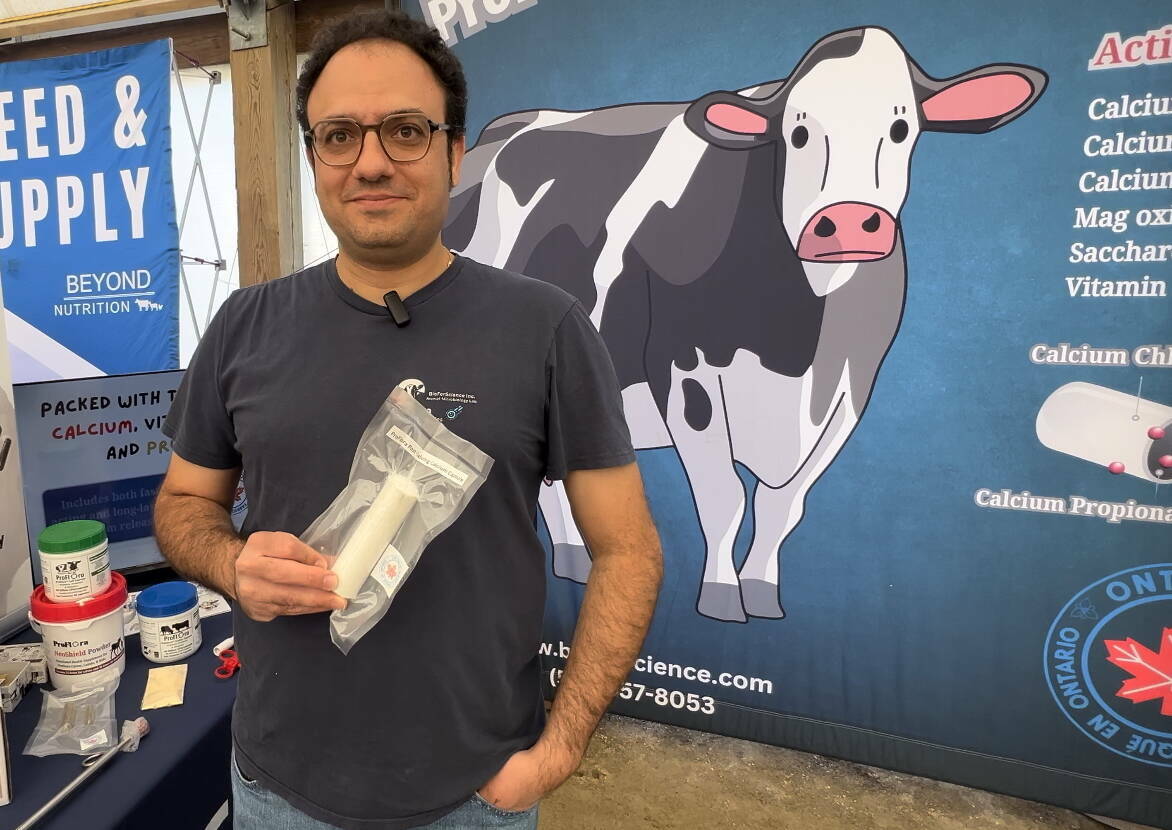
Canadian Cattle Young Leaders, national Environmental Stewardship Award winner and more
Canadian beef industry news, including award winners and job changes.
Gonzalez said she was inspired to research this topic because of her partner’s experience with drought as a cattle producer.
Her partner ranches in southern Alberta, and Gonzalez said the drought of the last five years caused issues with feed for many cattle producers he knows.
“The question that came up was, ‘Well, is there anything out there that we can use that may not have necessarily the best nutritive value, but it’s cheap enough to get some of those producers through really tough economic times, especially during those years of drought and economic hardship,’” she said.
With the Canadian cattle herd shrinking significantly during the years of drought to its smallest ever, and the U.S. cattle herd shrinking as well, Gonzalez said this research feels important.
“Wheat straw is significantly cheaper than hay. Canola screenings or flax screenings are readily available most of the time, usually from different industries.”
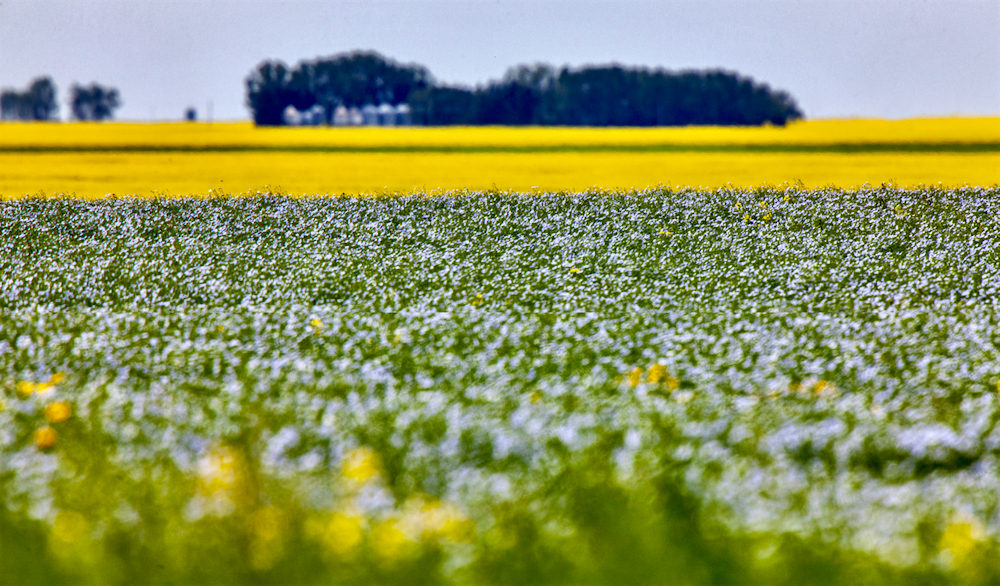
But, she added, we know wheat straw has a very low nutrient value. “Can we use some of those (canola or flax) screenings as a way to supplement that diet, from an energy perspective or from a protein perspective?”
Backgrounding study
Gonzalez said they started conducting their research with a backgrounding trial in mid-November 2023. For four periods of 21 days, they fed the cattle five different backgrounding diets.
Gonzalez said in their backgrounding trial, the inclusions of wheat straw were either 25 per cent or 50 per cent. Canola or flax screenings were included at 12.5 per cent on a dry matter basis. The control diet consisted of 60 per cent barley silage and approximately 30 per cent dry-rolled barley grain, with the rest of the diet being canola meal, minerals, vitamins and other ingredients.
- RELATED: Unpacking an oat silage feed report
Gonzalez said another factor that can play into the economics is that the canola and flax screenings were not crushed.
Over each of the 21-day periods of the study, they would do a weekly sampling of every diet ingredient and of the total mixed ration. They also measured feed delivered and feed refused, to calculate the intake on a dry matter basis, took fecal samples and, at the end of each 21-day period, weighed the cattle.
Gonzalez said throughout their study, the main challenge they ran into was trying to ensure cattle maintained the dry matter intake when fed the high wheat-straw inclusion diets.
“On the high-straw inclusion diets cattle were just not able to eat as much feed as we wanted them to. Just because of the fact that there was so much wheat straw and so much fibre in those diets, they would essentially eat significantly less than the other diets and then they would just get full and kind of back off.”
Results
Results from their backgrounding trial found the control diet did the best, with 3.04 pounds average daily gain. The low-straw/canola diet had 2.38 pounds average daily gain, and the low-straw/flax diet had 2.4 pounds average daily gain.
Gonzalez said with backgrounding cattle, you usually want to stay between 2.5 to 2.7 pounds for average daily gain, so none of these diets had poor results.
They also did an economic analysis, which found the control diet had a cost-to- gain ratio of $1.8 per kilo, the low-straw/ canola diet was $1.96 per kilo, and low-straw/flax was $1.9 per kilo.
Gonzalez said despite the fact the screening diets were still a bit higher in cost than the control diet, it can be an option for producers in times of drought, low feed availability and economic hardship depending on what resources they have available.
“This kind of gave us the idea of like, ‘Okay, well, maybe this is a viable alternative for producers to utilize some of this wheat straw in their diets and, again, this is keeping in mind with the fact that it’s going to depend on the price of wheat straw, it’s going to depend on the price of screenings, it’s going to depend on the nutritive value of your screenings,” Gonzalez said.
Gonzalez is currently working on the portion of her research regarding finishing cattle. For this research, they did a five per cent or 10 per cent inclusion rate for wheat straw while they maintained the canola or flax screenings at 12.5 per cent inclusion. The other difference with the finishing diet is the four periods were 28 days each, not 21.
At the time of the presentation, the finishing trial was still ongoing.
Next steps
Gonzalez said the next steps will be to look at the rest of their data from the finishing study. Then, the cattle will be sent to slaughter, and they will look at the carcass weight, yield grades, quality grades, mar- bling scores, liver scores, carcass dressing percentage, etc. She said they are also going to do an in vitro trial to look at the rumen fermentation parameters. She said they’re trying to determine the level of ammonia and methane the diets are producing.
So we can have a holistic view of the entire processing side of these treatment diets, not necessarily only from the cattle performance side.”
At the Livestock and Forage Centre of Excellence field day, Gonzalez presented her research and said she received feedback from producers in attendance. Generally, producers said that although they’d used straw in rations, they’d never had numbers, so it was nice to see numbers. She hopes the data from this study can be beneficial to producers, especially in times of economic hardship.
“I know that a lot of people may look at the results of the research and they say, ‘Well, your cattle, they didn’t compare to a control diet, perhaps.’ That’s not the point,” Gonzalez said. “This is not going to be a performance to the level of a control diet where you have 60 per cent silage and 30 per cent in grain.”
She said instead, this study is to show there are other options during times of low feed supply. It’s designed for producers suffering economic hardship.
“And you’re having to make that decision of whether you have to get rid of some of your operation, or can you utilize some of these byproducts to keep your operation the same size, but at a lower cost. Essentially, that’s what we’re trying to provide producers.”


